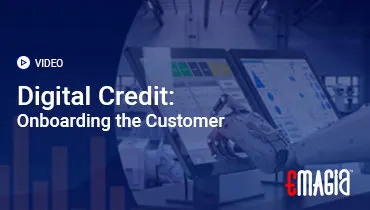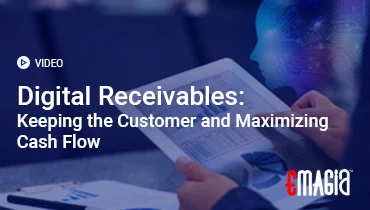Introduction
In today’s fast-paced business environment, ensuring timely payments is crucial for maintaining healthy cash flow and fostering strong client relationships. Payment reminders play a pivotal role in prompting clients to fulfill their financial obligations promptly. This comprehensive guide delves into the intricacies of payment reminders, offering insights, strategies, and best practices to help you get paid on time.
What is a Payment Reminder?
A payment reminder is a communication sent to clients or customers to prompt them to pay an outstanding invoice or bill. It serves as a gentle nudge, ensuring that payments are made within the agreed-upon timeframe. Payment reminders can be sent via various channels, including email, SMS, or even traditional mail, and are essential tools in accounts receivable management.
Importance of Payment Reminders
Timely payment reminders are vital for several reasons:
- Cash Flow Management: Ensuring consistent cash inflow is essential for operational stability.
- Client Relationship Maintenance: Professional reminders help maintain positive client relationships by preventing misunderstandings.
- Reduction in Bad Debts: Regular reminders decrease the likelihood of payments becoming severely overdue.
- Operational Efficiency: Automated reminders reduce the administrative burden on staff.
Types of Payment Reminders
Understanding the different types of payment reminders can help tailor your approach:
1. Advance Payment Reminders
Sent before the due date, these reminders serve as a proactive measure to prompt timely payments.
2. Due Date Reminders
Dispatched on the actual due date, these reminders reinforce the payment deadline.
3. Overdue Payment Reminders
Sent after the due date has passed, these reminders escalate in urgency depending on how overdue the payment is.
4. Final Notices
These are stern reminders indicating potential consequences, such as service suspension or legal action, if payment is not received promptly.
Crafting Effective Payment Reminder Messages
Creating compelling payment reminders involves a blend of clarity, professionalism, and tact. Here are key elements to consider:
1. Clear Subject Line
Ensure the subject line is direct and informative, e.g., “Payment Reminder: Invoice #12345 Due on [Date]”.
2. Personalized Greeting
Address the recipient by name to add a personal touch.
3. Invoice Details
Include essential information such as invoice number, due date, amount due, and a brief description of the services or products provided.
4. Payment Instructions
Provide clear instructions on how to make the payment, including payment methods and any necessary account details.
5. Polite Tone
Maintain a courteous and professional tone throughout the message.
6. Contact Information
Offer a point of contact for any queries or concerns regarding the invoice.
Best Practices for Sending Payment Reminders
Implementing best practices can enhance the effectiveness of your payment reminders:
1. Timely Dispatch
Send reminders at strategic intervals: a week before the due date, on the due date, and at regular intervals post-due date.
2. Automate Reminders
Utilize accounting or invoicing software to automate the sending of reminders, ensuring consistency and saving time.
3. Customize Messages
Tailor the content and tone of reminders based on the client’s payment history and relationship with your business.
4. Multiple Channels
Leverage various communication channels, such as email, SMS, and phone calls, to increase the likelihood of the message being received and acted upon.
5. Monitor Responses
Track client responses to reminders and adjust your approach accordingly.
Legal Considerations
When sending payment reminders, it’s essential to be aware of legal implications:
- Compliance with Regulations: Ensure your reminders comply with local laws and regulations regarding debt collection and communication.
- Privacy Laws: Adhere to data protection laws when handling client information.
- Documentation: Keep records of all communications for reference in case of disputes.
How Emagia Enhances Payment Reminder Processes
Smarter, Faster, Better: How Emagia Transforms Your Payment Reminder Strategy
Emagia offers advanced solutions to streamline and optimize your payment reminder processes:
1. Automated Workflows
Emagia’s platform automates the entire payment reminder workflow, reducing manual intervention and ensuring timely communications.
2. Personalized Messaging
Utilize Emagia’s AI capabilities to craft personalized messages that resonate with clients, increasing the likelihood of prompt payments.
3. Multi-Channel Communication
Reach clients through their preferred channels, be it email, SMS, or phone calls, enhancing engagement and responsiveness.
4. Analytics and Reporting
Gain insights into the effectiveness of your reminders through comprehensive analytics, allowing for continuous improvement.
5. Integration Capabilities
Seamlessly integrate Emagia with your existing accounting and CRM systems for a unified approach to accounts receivable management.
Frequently Asked Questions
What is the best time to send a payment reminder?
The optimal times are a week before the due date, on the due date, and at regular intervals after the due date if payment hasn’t been received.
How many payment reminders should I send?
It’s advisable to send up to three reminders: one before the due date, one on the due date, and one after the due date. Additional reminders can be sent based on the client’s responsiveness.
What should I include in a payment reminder?
Include the invoice number, due date, amount due, payment instructions, and contact information for any queries.
Can I automate payment reminders?
Yes, using software like Emagia, you can automate the sending of payment reminders, ensuring consistency and efficiency.
How do I handle clients who consistently pay late?
Engage in direct communication to understand any underlying issues, consider adjusting payment terms, and, if necessary, implement late payment fees or other deterrents.
Conclusion
Effective payment reminders are essential tools in ensuring timely payments and maintaining healthy client relationships. By understanding the types of reminders, crafting compelling messages, adhering to best practices, and leveraging advanced solutions like Emagia, businesses can optimize their accounts receivable processes and enhance financial stability.



